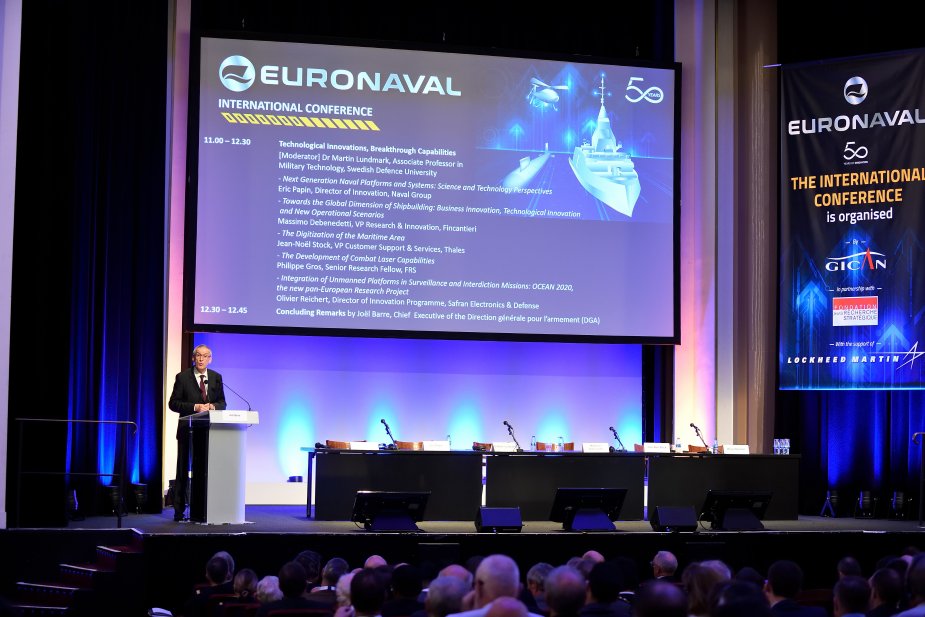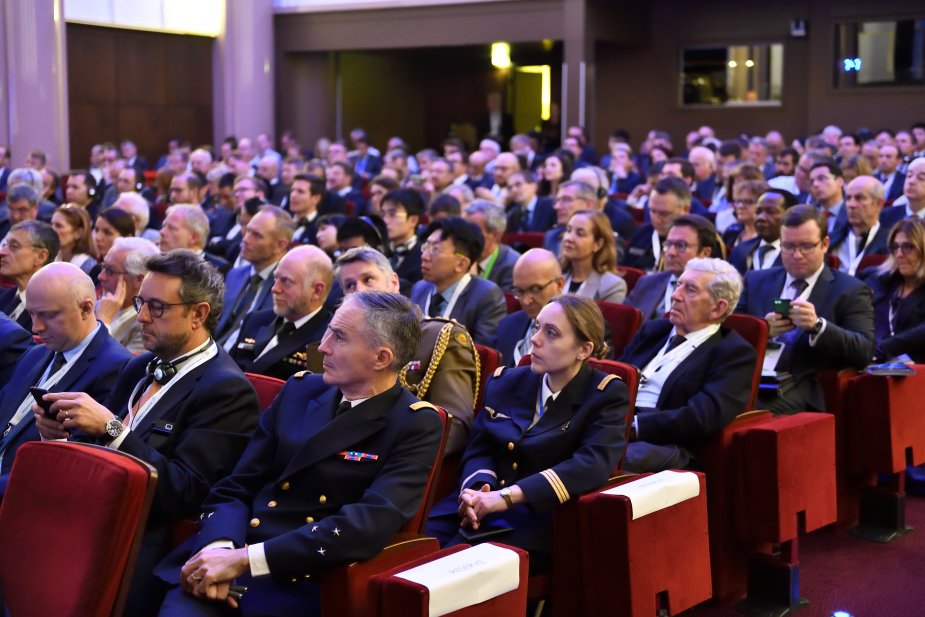By Alix Valenti - Naval Forces Editor-in-Chief
This year’s iteration of Euronaval opened on Monday, 22 October with the ‘Naval Defence’ colloquium at the Maison de la Chimie, Paris, France. Being attended by a high level officials, industrials and press, it explored two main themes: ‘Maritime Ambitions, (Re)Affirmation of Power’, and ‘Technological innovations, Breakthrough Capabilities’.

The panel discussion on, ‘Maritime Ambitions, (Re)Affirmations,’ focused primarily on the panellists’ perceptions of the changing maritime environment and threats over the past decades. It was clear from all presentations that the world has moved away from a period of, “strategic pause,” as noted by Vice Admiral Rainer Brinkmann, Deputy Chief of the German Navy, Commander German Fleet and Supporting Forces, where NATO countries hoped to cash in on post-Cold War peace dividends; instead, the maritime environment is now marked by, “simultaneous threats in a wide variety of theatres of operation,” as expressed by Vice Admiral Denis Béraud, Major General of the French Navy.
These threats range from migration and climate change to non-state actors having increased access to weapons, such as anti-ship missiles, and heightened tensions brought on by a renewed displays of power ambitions from countries such as China and Russia in a number of different geostrategic areas of the world (e.g. the Baltic Sea, South and East China Seas, the Arctic, to name but a few).
Understandably, the ambiguity of Russian power projection (is Russia merely preparing to defend herself, or is her increase in defence spending a prelude to more aggressive operations?) was amongst Vice Admiral Brinkmann’s key concerns in his speech due to Germany’s geographic strategic position in relation to Russia.
However, China was also featured prominently in the talks. While Alexandre Sheldon Duplaix, Senior Research Fellow, ‘Service historique de la Défense,’ noted that in the past 30 years China has not only surpassed Russia in terms of tonnage for the People’s Liberation Army Navy (PLAN) but is actually now second only to the US, Marc Julienne, Associate Research Fellow, Asia Department, Fondation pour la Recherche Stratégique, went further in describing the country’s ambitions. He noted that 2015 marked a doctrinal shift with a focus, “moving from offshore waters defence to a combination of offshore waters defence with open seas protection.”

As a result, Chinese shipbuilding has seen a net increase in the number of corvettes, frigates, auxiliary oiler replenishment ships and submarines, without forgetting the introduction of the aircraft carrier. Similarly, in the context of a political strategy aimed at seeking new alliances in the Asia Pacific region, China has also started expanding its exports.
In this context, panellists noted, NATO navies have had to review their defence budgets in order to work toward the 2% of GDP goal and start modernising navies that had seen a decrease in investment over the last decades. Vice Admiral Rankmann indicated that the German Navy was benefitting from defence funding increases with a number of programmes underway to modernise a naval fleet which, he noted, feels responsible for the protection of Europe’s Northern flank and the Baltic region.
Commodore Steve Allen, Assistant Chief of Staff, Carrier Strike and Aviation, brought to the audience’s attention the importance of the Royal Navy’s new aircraft carrier, the ‘Queen Elizabeth,’ and the modernisation programmes aimed at building a strong carrier strike group. Finally, Vice Admiral Béraud noted that the French Navy was also undergoing a modernisation process, and concluded the first part of the morning session by stating: “The past decade has seen increased awareness of the maritime and naval domain; to maintain technological superiority, NATO navies now need to make sure that new technologies and digital transformation become an opportunity rather than only represent a threat.”
This neatly introduced the second part of the colloquium, focused on ‘Technological Innovations, Breakthrough Capabilities,’ where representatives from Naval Group, Fincantieri, Thales and Safran Electronics & Defence presented those cutting edge technologies to respond to Vice Admiral Béraud’s call. Visit these industrial players to find out more.










